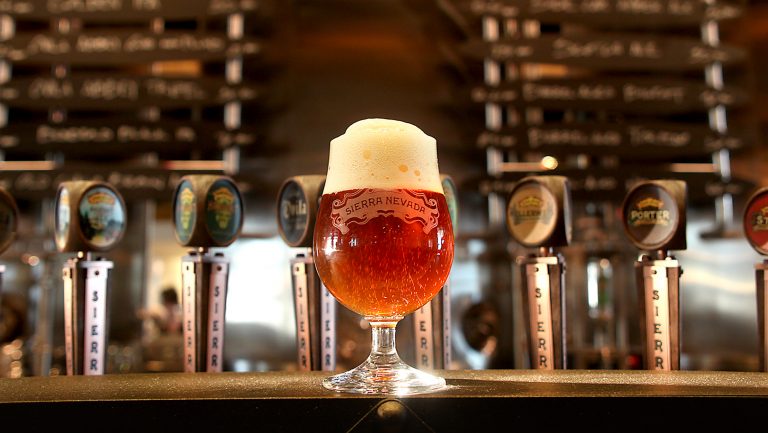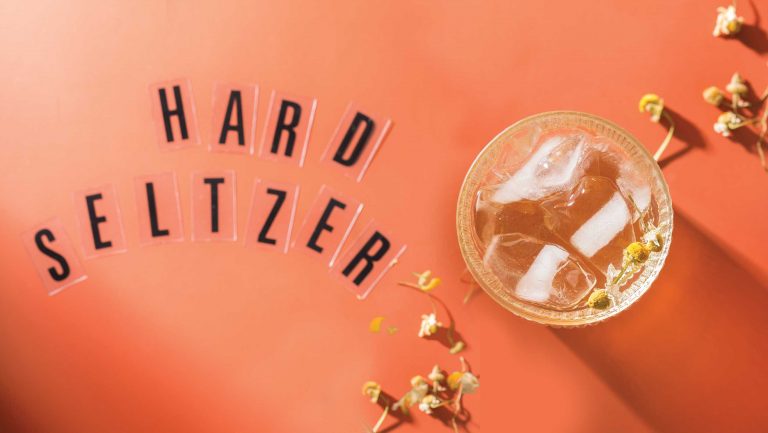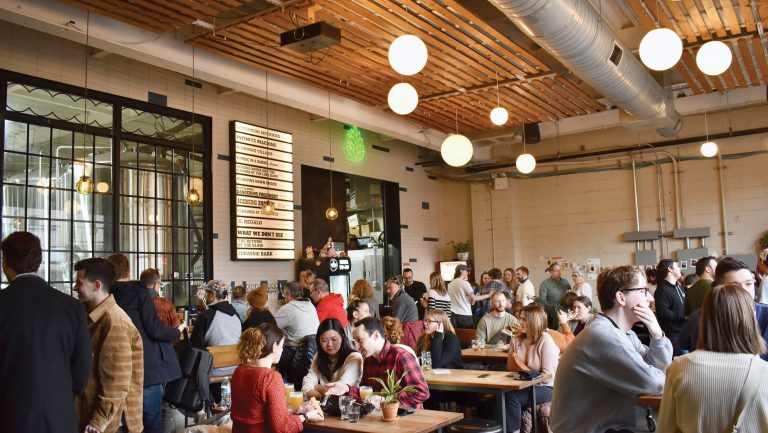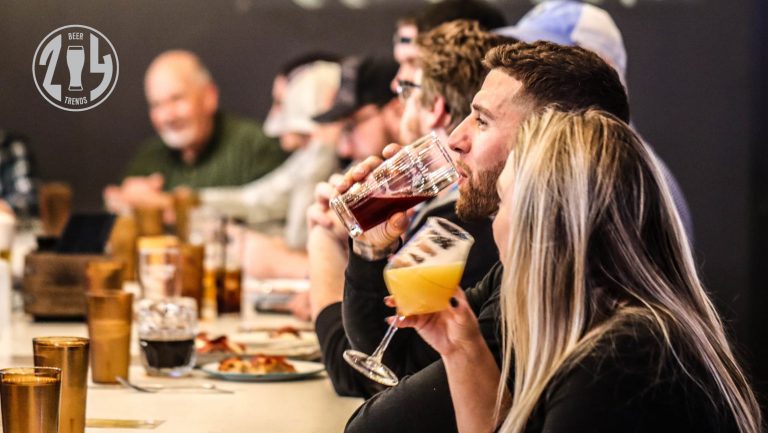If you speak with people in the beer industry about sustainable practices, one thing quickly becomes clear: Brewing, in general, is not an environmentally friendly business.
“Beer is about as wasteful a product you can imagine,” says Joe Bolick, a director at the Iowa Waste Reduction Center (IWRC), a non-profit organization at the University of Northern Iowa that provides environmental consulting for state businesses. It takes three to seven barrels of water to make one barrel of beer, according to a paper published by the University of Vermont. A lot of energy is needed for heat during the brewing process, as well as for keeping the beer cool after. Then there are the byproducts that go unrecycled and the transportation footprint.
While sustainability has been a major focus in wine regions across the U.S. since at least the early 2000s, thanks to groups like California Sustainable Winegrowing Alliance, there hasn’t been a unified sustainable front for beer—until recently. “Brewing is so resource intense that it leads itself naturally to becoming more sustainable,” Bolick says. In other words, where there’s waste, there’s opportunity.

Don’t miss the latest drinks industry news and insights. Sign up for our award-winning newsletters and get insider intel, resources, and trends delivered to your inbox every week.
In 2017, the IWRC launched the Iowa Green Brewery Certification after consulting with the state’s brewers. It serves as a benchmarking tool that gives breweries a way to implement sustainable practices and, just as important, helps consumers understand those efforts. There are other local efforts emerging as well, like the brewery division of the New York Green Business program, which allows accredited breweries to market themselves as a state environmental leader, and the brewery sustainability guidance offered by Colorado’s Small Business Assistance Program, which provides assessments and strategies. All are part of a growing movement across the country to lower the environmental footprint of breweries of all sizes.
“One of the cornerstones of what we do on behalf of craft brewers is [help improve] sustainability,” says Julia Herz, the craft beer program director for the Brewers Association (BA).
The BA created a sustainability sub-committee in 2013. It conducted its first sustainability benchmarking study in 2014, which measured energy and water use, and addressed ways that breweries could reduce water and solid waste, as well as carbon dioxide. It was an immediate success. By following the study’s sustainability targets, the first group of participating breweries cut enough costs and waste to save anywhere from $35,000 to $235,000 annually. The BA’s decade-long focus on improving sustainability, Herz says, is led by the brewers themselves.
A Greener Beer World
Real change can be seen at breweries across the country. Since 2016, New Belgium, with a brewery in Colorado and another planned for North Carolina, has worked on waste reduction and recycling efforts, like composting organic material, reusing spent grain, and separating recyclable materials to divert them from landfills. The brewery now makes enough money selling packaging, cans, and bottles to recycling plants to pay for four staff salaries.
Sierra Nevada’s North Carolina brewery became the first production brewery in the U.S. to be certified LEED Platinum in 2016 thanks to solar energy use, capturing and using carbon dioxide released during fermentation, and rainwater collection, to name a few initiatives. North Coast Brewing, a Certified B Corporation, works with Fortunate Farm on a closed-loop composting system and carbon farming project.
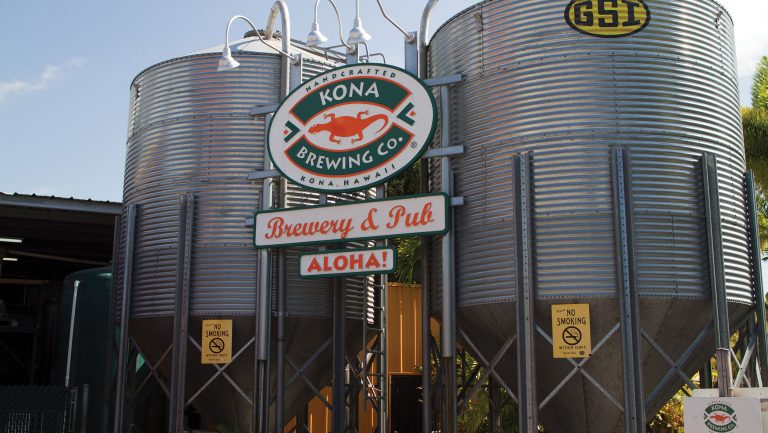
In places where every ingredient has to be shipped long distances, such as Hawaii, sustainability efforts are especially effective. Kona Brewing Co. will soon have a production brewery that can reclaim carbon dioxide and an on-site wastewater treatment center that turns captured methane into energy. Herz points out that while it’s hard to measure how much sustainability affects a brewery’s bottom line, it’s easy to point to the continued success of sustainable breweries.
Macro breweries are improving as well, as seen by Asahi’s renewable energy efforts and AB InBev’s aggressive 2025 sustainability targets, which includes sourcing 100 percent of purchased electricity from renewable sources.
“A lot of the sustainability measures we talk about for breweries, they all make good business sense,” Bolick says. “If you’re more efficient with your product, you’re making more money.”
The Iowa sustainable certification has recognized breweries like SingleSpeed Brewing, which is housed in an old Wonder Bread factory in Waterloo, Iowa, with solar panels on the roof, and Big Grove Brewery, which has a permeable-ground outdoor patio to limit stormwater contamination.
Growing Consumer Demand
Yet, for all breweries, there’s an upfront cost and the question of whether people are willing to pay a little more—and if they even value sustainability when it comes to their beer. At Atlanta’s Porter Beer Bar, owner Molly Gunn says she’s never had someone ask for a sustainable beer, and she doesn’t plan to highlight sustainability unless the market asks for it. There is a consensus among most brewers that the general awareness and demand just isn’t there yet for the average consumer; yet there are signs that could be changing, though.
A 2018 study out of Indiana University found that the “majority of beer consumers are willing to pay more for sustainable beer.” People who already pay a premium for beer as well as consumers who make environmentally-friendly choices on other goods and services are the most likely to pay extra for sustainably-produced beer. The study found 59 percent would pay a premium for sustainable beer at an average of 7.4 cents more per ounce. The study had a limited sample size, but Bolick says the University of Northern Iowa, where the IWRC is headquartered, and Arizona State University are working on a larger study on the same subject.
Yet sustainable doesn’t always equal higher costs for the consumer. Some of the most sustainable breweries like New Belgium and Sierra Nevada are sold at price points similar to or lower than breweries without sustainability measures.
“The unique aspect about craft beer is the relationship between the brewery and customer,” says Billy Smith, general manager at Kona Brewing. “The brewery a person drinks [at] becomes a representation of themselves. So the opportunity is really in the whole process of grain to glass to customer. People will seek out what is important to them, breweries just need to tell their story so they can be found.”
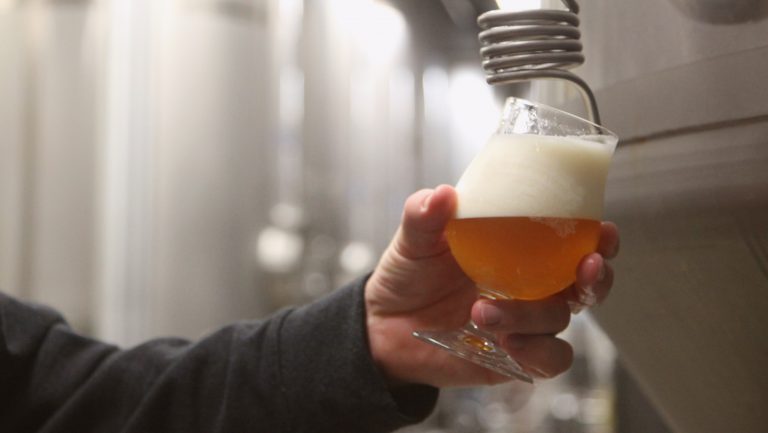
Getting the Message Right
Exactly how to tell that story can be a challenge, though, as Herz points out. “Sustainability is highly valued by many and relative to all,” Herz says, because “everybody has their own version of what [sustainability] means.”
There’s no one-size-fits-all method of explaining how breweries are environmentally-friendly, Smith says. “With all of the different certifications possible for a brewery to obtain, it can be quite confusing to customers.”
For Kona Brewing, that means sending the brewing team to talk with retailers, bars, and distributors about the brewery’s story and environmental commitment, Smith says. “We focus on how sustainability is a natural way of being for Kona Brewing because of our values, and then highlight the ‘cool’ and unique processes we are doing to differentiate ourselves from other breweries.”
Some breweries are including sustainability seals on packaging. Breweries in Iowa that are part of the IWRC can use green-certified logos, Bolick says, and adds that breweries get lots of local press coverage for being certified. Fremont Brewing in Seattle, Washington, made a name for itself in the state as a sustainable brewery and includes the Salmon Safe certification logo on its Cowiche Canyon Fresh Hop Ale, one of the many certifications the brewery has earned. Co-founder Sara Nelson says that she believes putting the logo on the packaging “has boosted our visibility and perhaps our sales.”
Breweries are promoting their sustainable efforts to visitors, too. In Denver, door stickers are distributed to breweries that are verified Certifiably Green Denver, which is the city’s environmental certification that started in the early 2010s. At Full Sail Brewing in Hood River, Oregon, sustainability practices are promoted on signs at the brewery’s entryways and on menus. “We feel people make their buying choices based on companies with whom they can align their values, and sustainability really is in our DNA,” says Full Sail marketing manager Sandra Evans.
Others, like Franklin Street Brewing in Manchester, Iowa, and those that promote national recognition like Brewery Vivant, in Grand Rapids, Michigan, which became the first LEED certified production brewery in the U.S. in 2012, have devoted their websites to spotlight their philosophies and practices.
The lack of a nationally recognized, more universal seal can make it tricky for retailers and on-premise buyers looking to support the most sustainable producers. According to Herz, hundreds, if not thousands, of breweries have active sustainability efforts, but the diversity of methods makes it hard to market. “So if you’re a retailer and looking to focus on [sustainable beers], you need to define your own version of sustainability and then source beers tied to that definition or version.”
When asked when the breakthrough moment for sustainable beer will happen, Bolick is optimistic, reminding that two of the most successful craft breweries—Sierra Nevada and New Belgium—are also two of the most sustainable. “If we haven’t gotten to that tipping point yet, I think we’re really close in this industry.”

Dispatch
Sign up for our award-winning newsletter
Don’t miss the latest drinks industry news and insights—delivered to your inbox every week.
Nickolaus Hines is a journalist who writes about beer, spirits, food, and travel. He’s the food and drinks editor at Matador Network and has written about drinks for Liquor.com, Men’s Health, October, Hop Culture, Supercall, and VinePair.

